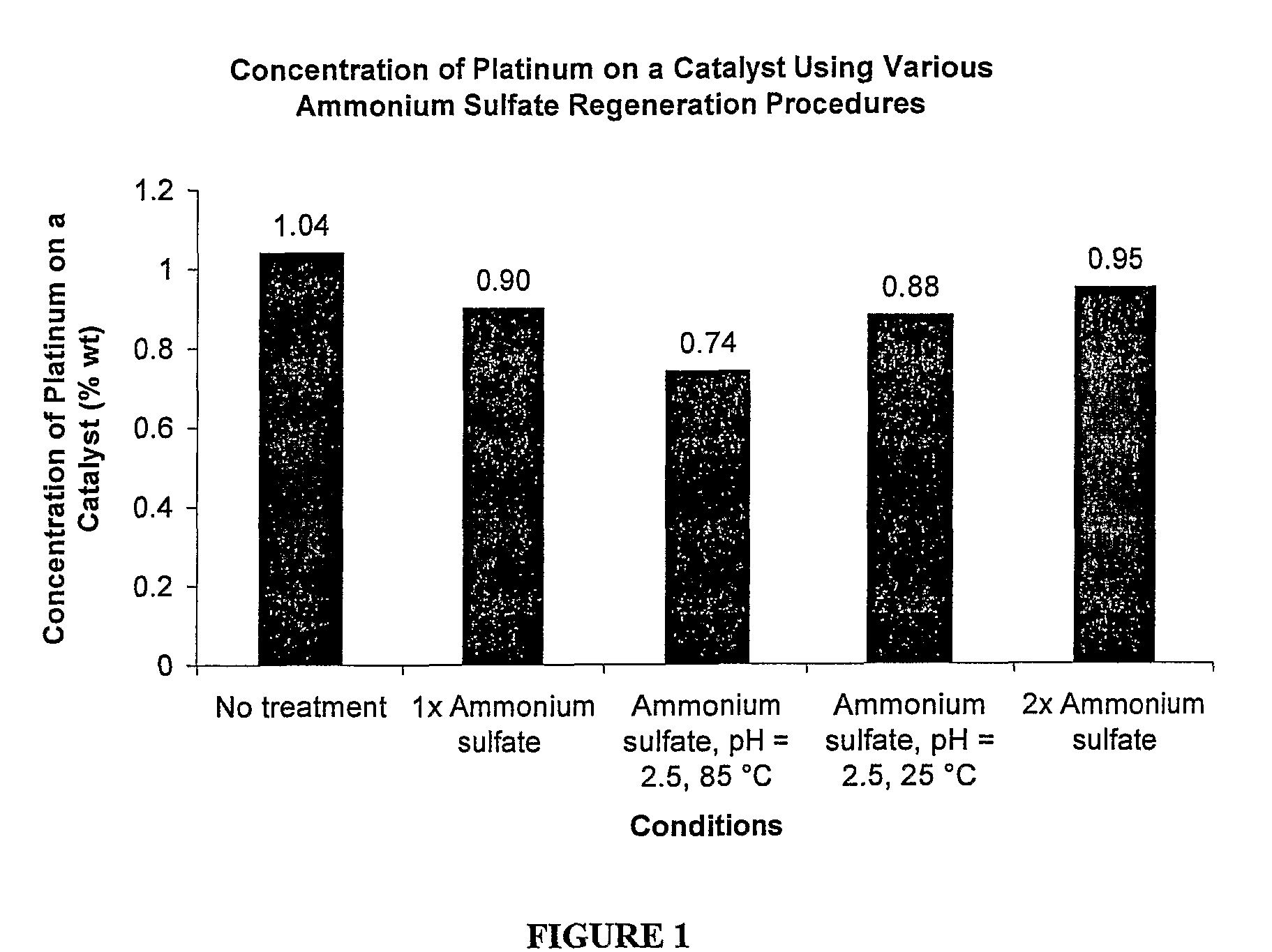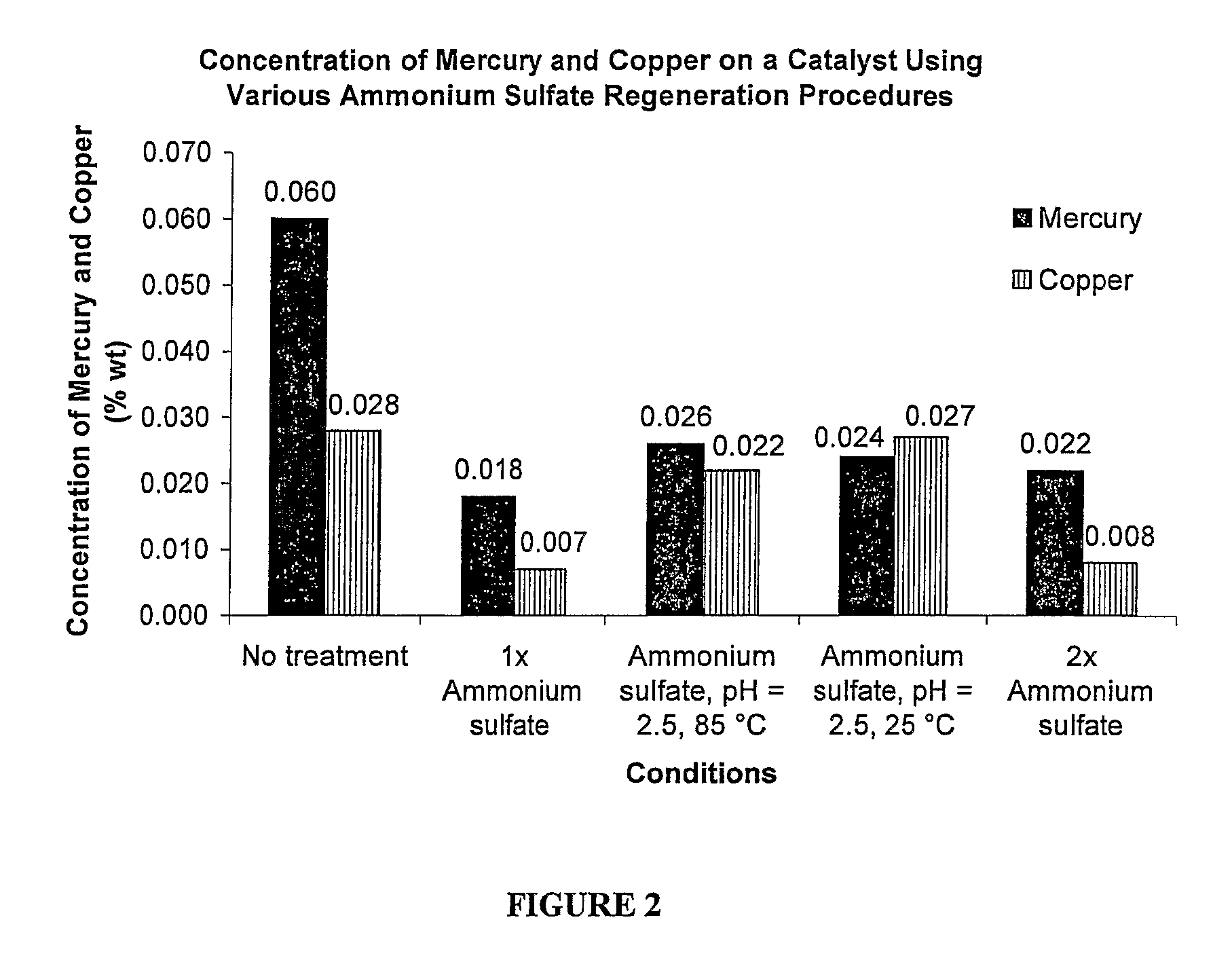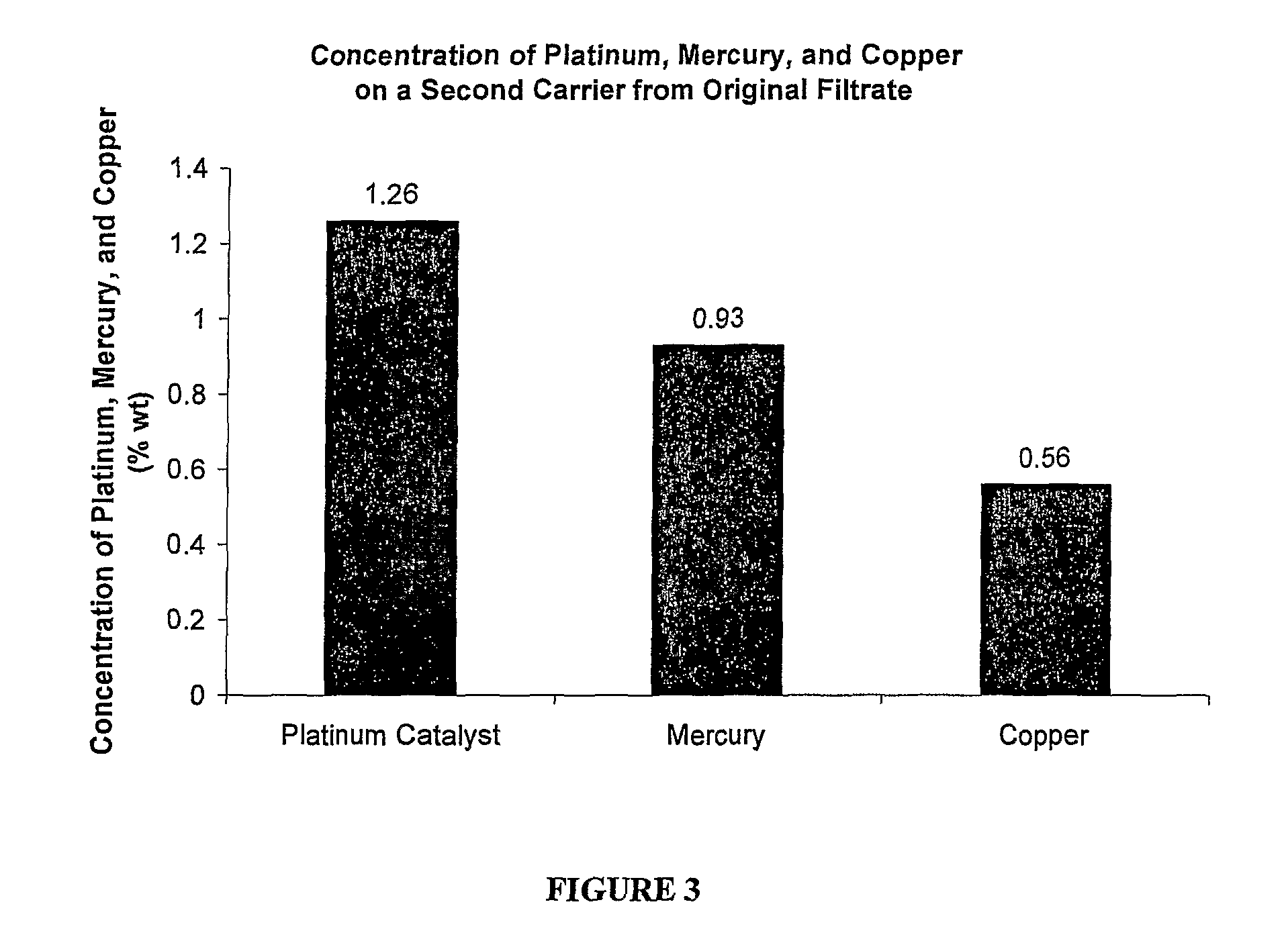Method of regenerating a catalyst
a technology of regenerating catalyst and catalyst layer, which is applied in the field of regenerating catalyst layer, can solve the problems of insufficient prior art methods of regenerating catalyst, inability to regenerate catalyst, and at least partially poison catalyst, etc., and achieves the effects of reducing industrial production costs, reducing loss of hydroxylamine production, and improving catalyst regeneration tim
- Summary
- Abstract
- Description
- Claims
- Application Information
AI Technical Summary
Benefits of technology
Problems solved by technology
Method used
Image
Examples
Embodiment Construction
[0018]A method of regenerating a catalyst having platinum applied on a carrier is provided and described additionally below. The method of the present invention is used to improve manufacturing reliability and decrease industrial production costs associated with preparation of hydroxylammonium salts. The method is typically utilized when extensive poisoning of the catalyst has occurred due to extensive impurities in raw materials used to create the hydroxylammonium salts, however the method can be used whenever any poisoning has occurred. The method utilizes a plentiful by-product of a commercial process also described additionally below. Most preferably, the method regenerates the catalyst for use in efficient production of hydroxylamine. But, hydroxylamine can be produced via a variety of processes and methods.
[0019]Specifically, hydroxylamine can be formed as a hydroxylammonium salt. A method of preparing hydroxylammonium salts includes using the catalyst having platinum applied ...
PUM
| Property | Measurement | Unit |
|---|---|---|
| volume | aaaaa | aaaaa |
| time | aaaaa | aaaaa |
| time | aaaaa | aaaaa |
Abstract
Description
Claims
Application Information
 Login to View More
Login to View More - R&D
- Intellectual Property
- Life Sciences
- Materials
- Tech Scout
- Unparalleled Data Quality
- Higher Quality Content
- 60% Fewer Hallucinations
Browse by: Latest US Patents, China's latest patents, Technical Efficacy Thesaurus, Application Domain, Technology Topic, Popular Technical Reports.
© 2025 PatSnap. All rights reserved.Legal|Privacy policy|Modern Slavery Act Transparency Statement|Sitemap|About US| Contact US: help@patsnap.com



